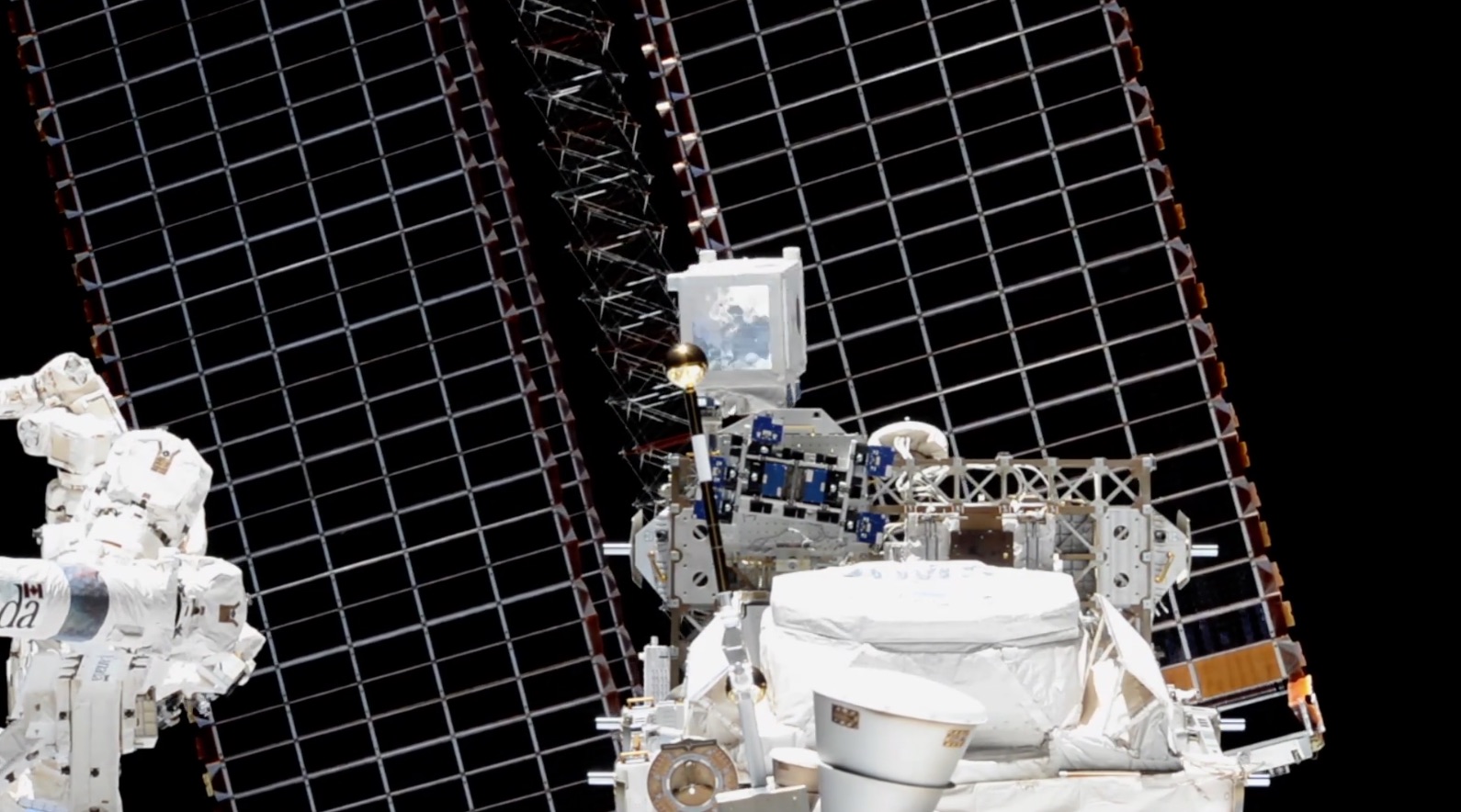Watch NASA's X-Ray-Hunting Pulsar Detector Do a Cosmic Dance in Space
Care to dance? An X-ray-hunting instrument on the International Space Station twists and turns in a new NASA video as huge solar arrays rotate behind it. The solar arrays were making way for a fresh space station crew that arrived earlier this summer.
The foreground of the video shows NASA's Neutron star Interior Composition Explorer (NICER) while it is studying X-ray sources such as pulsars — rapidly rotating, dense stars that emit regular signals of X-rays we can detect from Earth.
Over the course of one orbit, which you can see in the video, NICER moves around to track several X-ray sources in the sky. Typical examples might include the sun or the nearby star system Alpha Centauri, officials with NASA's Goddard Space Flight Center said in the video's description. "Movement in the movie, which represents a little more than one 90-minute orbit, is sped up by 100 times," they added.
But scientists also have to take the space station's massive solar arrays into account when planning NICER's maneuvers. Each one of these arrays is 112 feet (34 meters) long, which is a bit shorter than the width of an American football field.
NICER needs to move before the solar arrays block its field of view. In the video, captured June 8, at first the solar arrays were parked to make way for the arrival and docking of the Expedition 56/57 crew inside a Russian Soyuz spacecraft. Then, the arrays moved to track the sun and provide energy for the space station.
While one of NICER's goals is to figure out the size of pulsars — a measure that helps scientists learn what these pulsars are made of — another space station investigation is to try to figure out how to use pulsars for navigation. The navigation technology demonstration, called Station Explorer for X-ray Timing and Navigation Technology, is investigating whether it is possible to use pulsars as a sort of GPS for future spacecraft navigating in the solar system, or even beyond.
You can read more about NICER's work on this NASA web page.
Breaking space news, the latest updates on rocket launches, skywatching events and more!
Follow us @Spacedotcom, Facebook and Google+. Original article on Space.com.

Elizabeth Howell (she/her), Ph.D., was a staff writer in the spaceflight channel between 2022 and 2024 specializing in Canadian space news. She was contributing writer for Space.com for 10 years from 2012 to 2024. Elizabeth's reporting includes multiple exclusives with the White House, leading world coverage about a lost-and-found space tomato on the International Space Station, witnessing five human spaceflight launches on two continents, flying parabolic, working inside a spacesuit, and participating in a simulated Mars mission. Her latest book, "Why Am I Taller?" (ECW Press, 2022) is co-written with astronaut Dave Williams.

